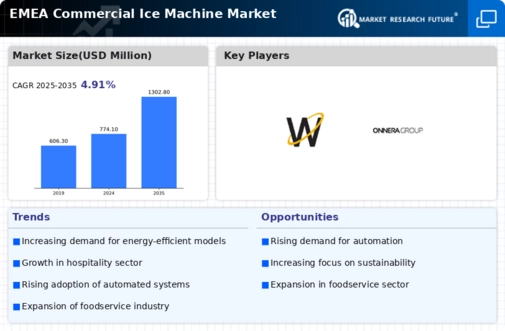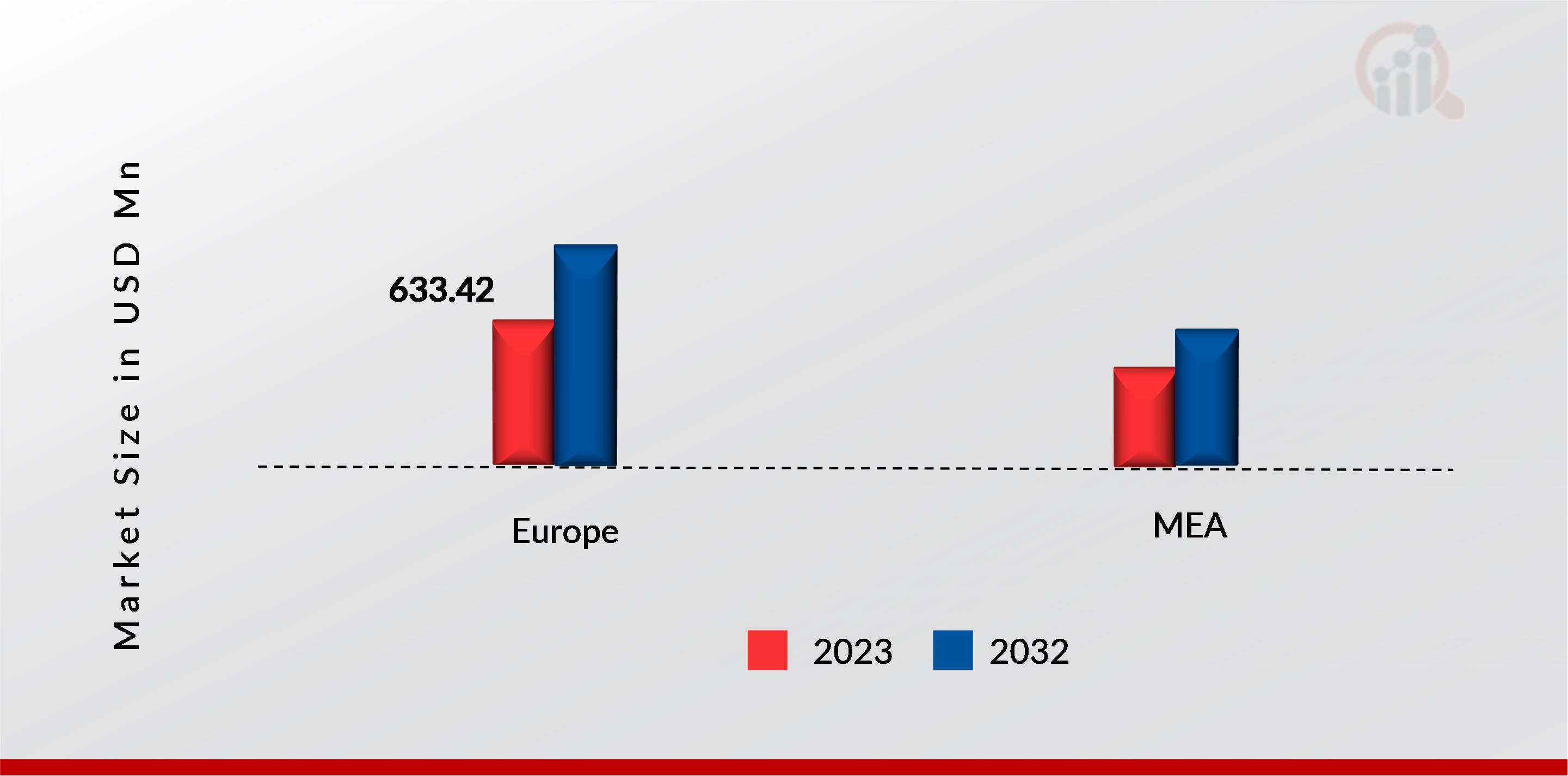EMEA Commercial Ice Machine Market Summary
The Global EMEA Commercial Ice Machine Market is projected to grow from 774.1 USD Million in 2024 to 1302.8 USD Million by 2035.
Key Market Trends & Highlights
EMEA Commercial Ice Machine Key Trends and Highlights
- The market is expected to experience a compound annual growth rate (CAGR) of 4.85 percent from 2025 to 2035.
- By 2035, the market valuation is anticipated to reach 1302.8 USD Million, indicating robust growth potential.
- In 2024, the market is valued at 774.1 USD Million, reflecting a solid foundation for future expansion.
- Growing adoption of energy-efficient technologies due to increasing environmental regulations is a major market driver.
Market Size & Forecast
| 2024 Market Size | 774.1 (USD Million) |
| 2035 Market Size | 1302.8 (USD Million) |
| CAGR (2025-2035) | 4.85% |
Major Players
Hoshizaki Corporation (Japan), Ali Group Worldwide (Italy), The Middleby Corporation (US), Whirlpool Corporation (US), Electrolux Professional Group (Sweden), ZIEGRA Eismaschinen GmbH (Germany), ONNERA Group (Spain), KTI - Plersch Kältetechnik GmbH (Germany), WESSAMAT Eismaschinenfabrik GmbH (Germany), Maxx Ice (Florida), Polar Refrigeration (UK)














Leave a Comment